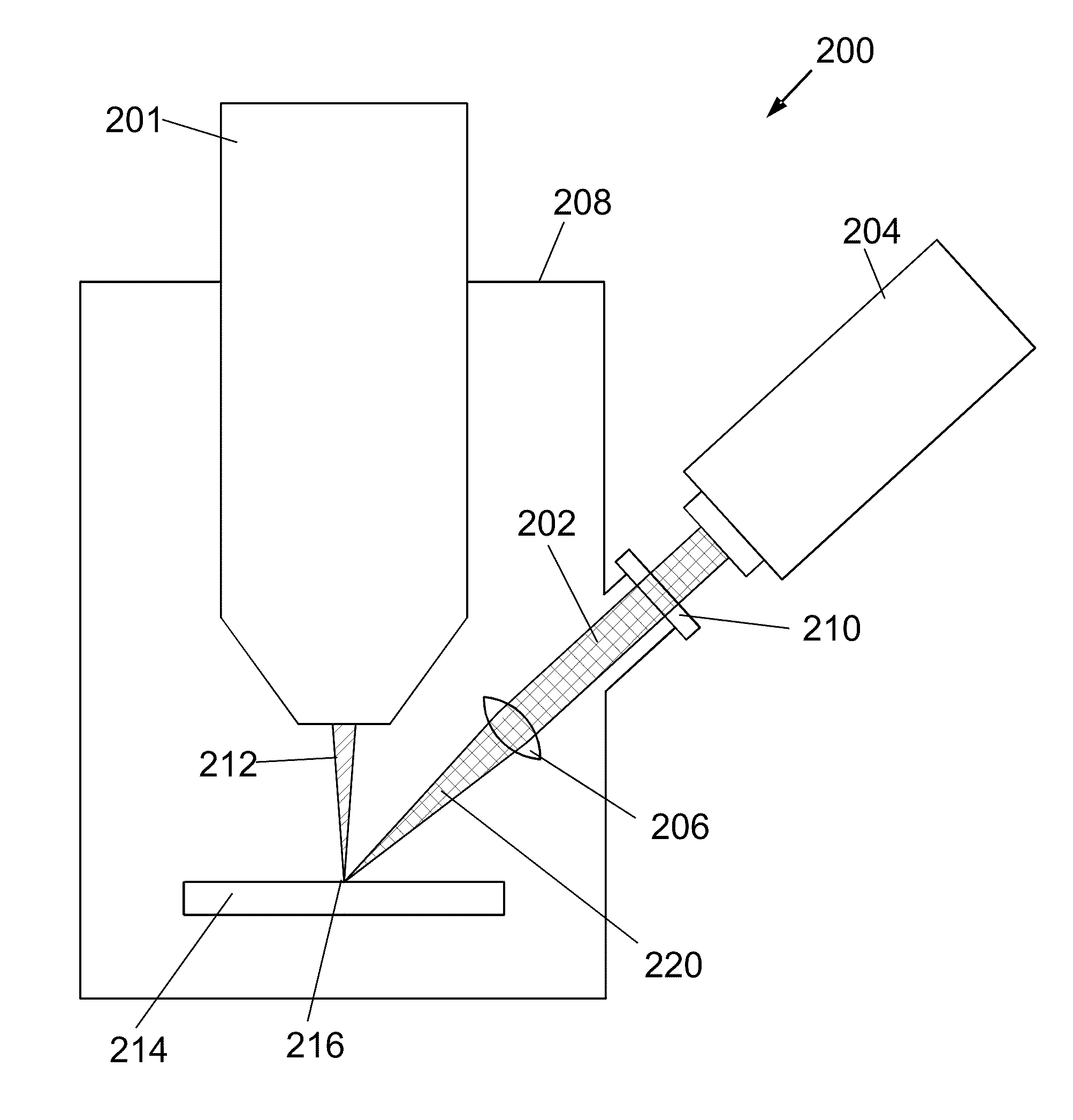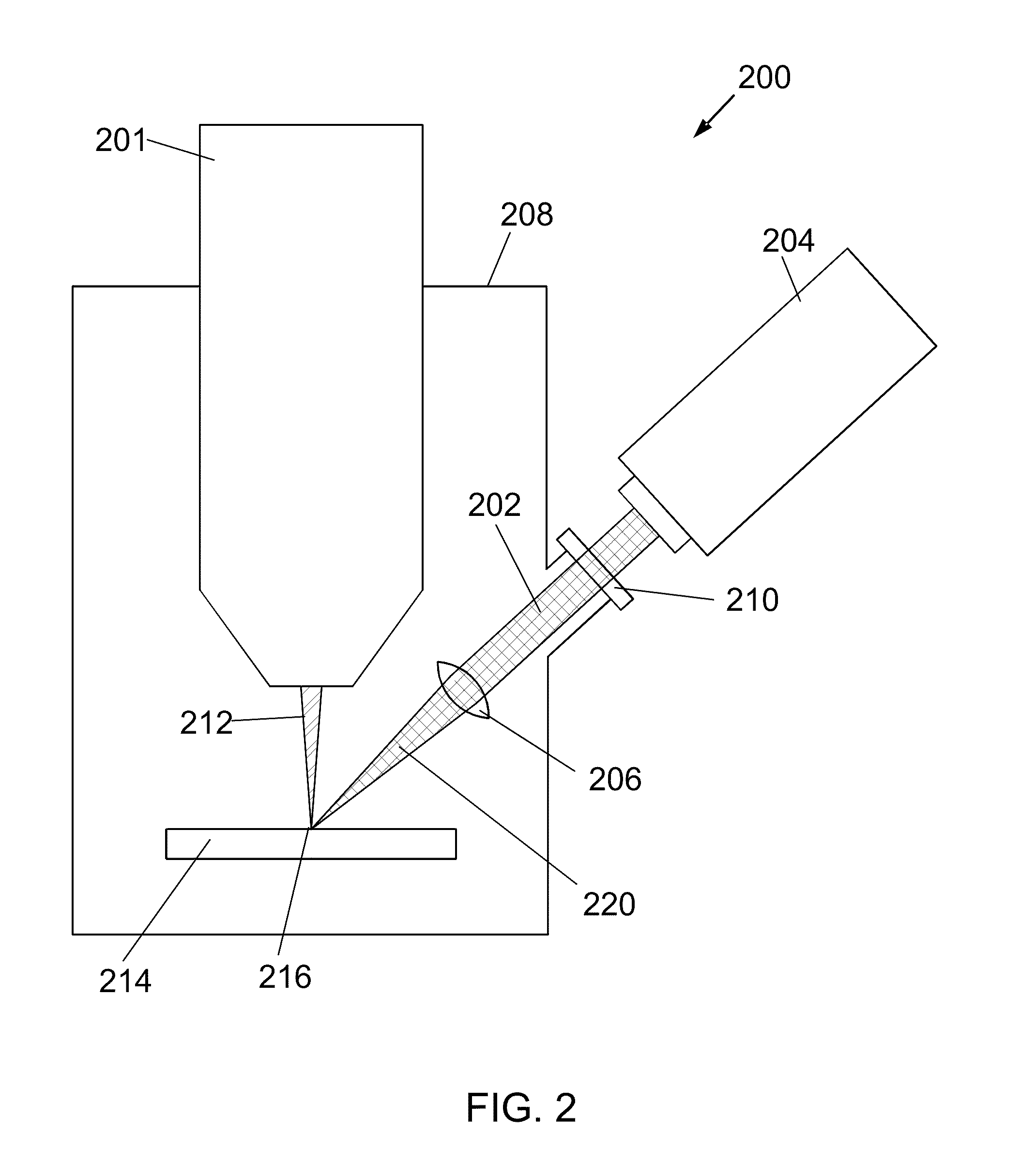Combination Laser and Charged Particle Beam System
a laser beam and charged particle technology, applied in the field of laser beam system combination, can solve the problems of high-precision milling or sample removal often requiring tradeoffs, ion beams tend to damage sample surfaces, and limited processing rate of liquid metal ion sources
- Summary
- Abstract
- Description
- Claims
- Application Information
AI Technical Summary
Benefits of technology
Problems solved by technology
Method used
Image
Examples
Embodiment Construction
Preferred embodiments of the present invention provide an improved apparatus for introducing an ultrashort-pulsed laser into a charged particle beam system. The combination of a laser with a charged particle beam system provides a number of advantages over either system standing alone. For example, combining a high resolution liquid metal ion source (LMIS) FIB with a femtosecond laser allows the laser beam to be used for rapid material removal and the ion beam to be used for high precision micromachining in order to provide an extended range of milling applications within the same system. Preferred embodiments of the present invention provide a number of methods one might use in chamber optics to combine a laser beam with a charged particle beam. In some embodiments listed below, the laser beam is brought into the vacuum chamber via a window formed from a material that is transparent to the laser beam. Other preferred embodiments in which the laser is located within the vacuum chamb...
PUM
 Login to View More
Login to View More Abstract
Description
Claims
Application Information
 Login to View More
Login to View More - R&D
- Intellectual Property
- Life Sciences
- Materials
- Tech Scout
- Unparalleled Data Quality
- Higher Quality Content
- 60% Fewer Hallucinations
Browse by: Latest US Patents, China's latest patents, Technical Efficacy Thesaurus, Application Domain, Technology Topic, Popular Technical Reports.
© 2025 PatSnap. All rights reserved.Legal|Privacy policy|Modern Slavery Act Transparency Statement|Sitemap|About US| Contact US: help@patsnap.com



